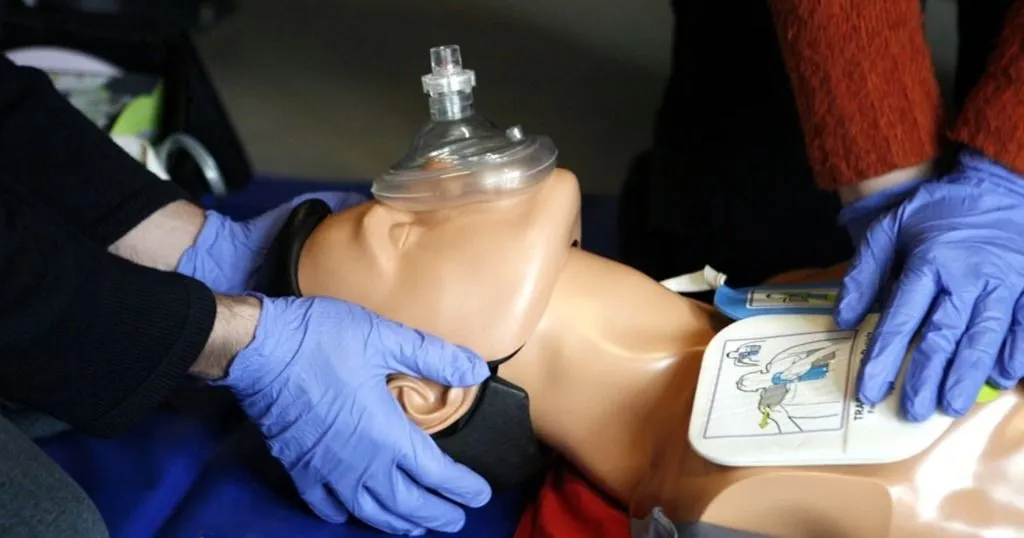Reducing eating pace: a behavioral intervention for childhood obesity
Studies on eating behavior play an important role in preventing childhood obesity. Faith and his team examined the effectiveness of a family-based behavioral intervention to reduce eating pace.
Posted by
Published on
Mon 25 Nov. 2024
Topics
| Nutrition | Child | Coding Behavior | Eating Behavior | MediaRecorder | Obesitas | Observational Research | Parent-child Interaction | The Observer XT |

The prevalence of childhood obesity has grown substantially over the last years. Recent estimates suggest that, globally, as many as 37 million children under the age of 5 are overweight. When looking at the ages between 5 and 19, these numbers rise to a staggerng 390 million. As a result, childhood obesity is considered one of most serious public health challenges of the 21st century.
Children who are overweight suffer from many short-term and long-term health problems. From a young age, they are at risk for diabetes, physical disabilities, certain types of cancer, and heart disease. Overweight and obese children are also likely to stay obese and maintain these health risks into adulthood.
The World Health Organization (WHO) emphasizes that becoming overweight can largely be prevented. Specifically, they recommend increasing physical activity and decreasing the intake of energy-dense, nutrient-poor foods.
High eating rate and obesity
One way to decrease the intake of unhealthy foods is by changing one’s eating rate. Eating rate describes the amount of food that is consumed within a given time frame, often measured as mouthfuls or kilocalories per minute.
Research has shown that a high eating rate during childhood is associated with obesity and expedited weight gain. However, reducing eating rate in children has received little attention so far. Furthermore, the few studies on this subject only focused on older children or adolescents.
That's why researcher Faith and his team examined the effectiveness of a behavioral intervention for young children (RePace). This family-based treatment is designed to reduce eating rate and includes different educational and behavioral techniques to influence eating behavior.
Learning to eat more slowly
The researchers included 28 parent-child dyads in their study, with children between four and eight years old. To participate in the study, both the parent and the child had to be overweight or obese, and children had to display a rapid eating rate.
Families attended five interactive meal sessions at a laboratory, which were focused on raising awareness of eating speed, learning to eat more slowly, and increasing social interactions during meal times.
For example, rabbit and turtle puppets were used to show the difference between fast and slow eating. Families also learned to use a ‘Turtle Timer,’ which vibrates every 30 seconds and helps children to pace their eating. Lastly, a ‘Chat Jar’ filled with open-ended questions was used to stimulate conversation.
FREE TRIAL: Try The Observer XT yourself!
Request a free trial and see for yourself how easy behavioral research can be!
- Work faster
- Reduce costs
- Get better data
Measuring eating behavior
To assess eating rate, researchers asked parents to fill in a questionnaire about their child’s eating behavior. Furthermore, eating behavior was observed in the lab before and after treatment.
Observational data was recorded and coded using MediaRecorder and The Observer XT.
Researchers also studied BMI scores, a 24-hour dietary intake, and child eating patterns. Particularly, they were interested in changes in responsiveness to satiety and food cues, as well as enjoyment of eating.
All measurements were compared to a control group, consisting of families that attended one 30-minute educational session about healthy eating.
Changing eating pace
Results showed that children from the RePace intervention group decreased their eating rate more than children from the control group, as reported by parents.
At first, these differences were not found in the laboratory observations. When examined more closely, Faith and his colleagues found that these results were influenced by how typical a meal at the lab was, compared to a meal at home.
Specifically, if the amount of food presented at both meals was similar, children from the intervention group showed a greater decrease in eating rate compared to children from the control group.
Better BMI and food enjoyment
Researchers also found greater improvements in BMI in children from the intervention group, as well as an increase in food enjoyment. Lastly, when examining families with a high session attendance, results showed a decrease in total energy intake.
This study shows that eating rate can be changed effectively with behavioral interventions. Importantly, the results also suggest that changing one’s eating rate has a positive impact on both bodyweight and creating a healthy eating pattern.
With the WHO recommendation to decrease intake of energy-dense foods, studies like these play an important role in preventing and reducing childhood obesity. More research is still needed to assess and develop interventions for children from all age groups.
FREE WHITE PAPER: Parent-child interaction
This free white paper informs you how on to facilitate a parent-child study and how to set up your experiment.
- Perform tests in a lab or in-home
- Collect data with video
- Design a coding scheme
References
Faith, M.; Diewald, L.; Crabbe, S.; Burgess, B.; Berkowitz, R. (2019). Reduced eating pace (RePace) behavioral intervention for children prone to or with obesity: does the turtle win the race? Obesity, 27(1), 121-129.
https://www.who.int/dietphysicalactivity/childhood/en/
Frequently asked questions
What does eating pace have to do with childhood obesity?
Eating quickly has been linked to a higher risk of obesity. Studies show that children who eat faster often consume more food before their body signals that they’re full. This can lead to a higher total energy intake, increasing the risk of becoming overweight or obese over time.
How do researchers measure eating pace in children?
Researchers use video recordings and behavioral coding software like The Observer XT to track bite-by-bite behaviors. They record how long a meal takes, how many bites a child takes, and the time between bites. Some studies also combine this with physiological or observational data, like facial expressions or social interactions during meals.
Why do some children eat faster than others?
Eating speed can be influenced by several factors, including age, individual temperament, parental modeling, food availability, and even cultural habits. Some children may naturally eat faster, while others may be influenced by external cues like distractions, food restrictions, or pressure to finish quickly.
Is fast eating always a bad thing?
Not necessarily. But when fast eating becomes habitual and leads to overeating, it can contribute to excess weight gain. Slowing down mealtime—such as by encouraging more chewing, putting down utensils between bites, or using mindful eating techniques—can help children better recognize satiety signals.
Can eating pace be changed through interventions?
Yes. Behavioral interventions that focus on meal structure, pace, and portion awareness have shown promise. For example, encouraging slower eating through games or structured mealtimes, or using wearable tech to give feedback on bite rate, can help modify eating behavior.
What methods are commonly used to study children’s eating behaviors?
Studies often use video observation, behavioral coding, and software-based analysis tools to analyze mealtime interactions. These methods allow researchers to track precise behaviors, like the number of bites or seconds between bites, in both naturalistic and lab settings.
Why is it important to study eating pace in the context of family meals?
Because children's eating behaviors are shaped in social contexts. Family meals offer insight into how parent-child interactions, household routines, and emotional cues influence how children eat. Understanding this dynamic helps researchers and health professionals design more effective interventions.
Related Posts

Learn to cooperate toward shared goals using the principles of CRM

Evaluating ergonomics in healthcare – paramedics
